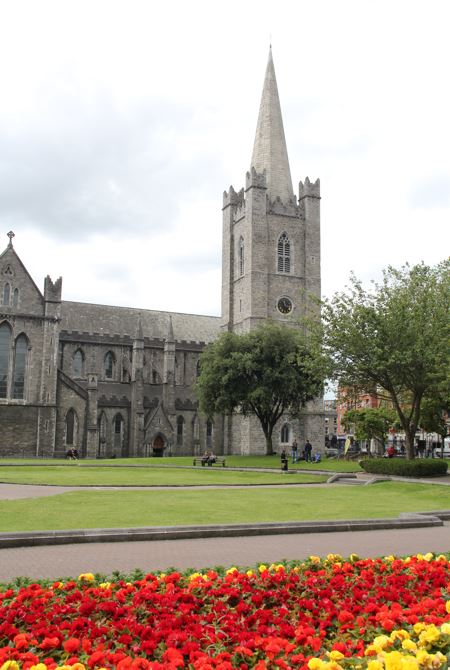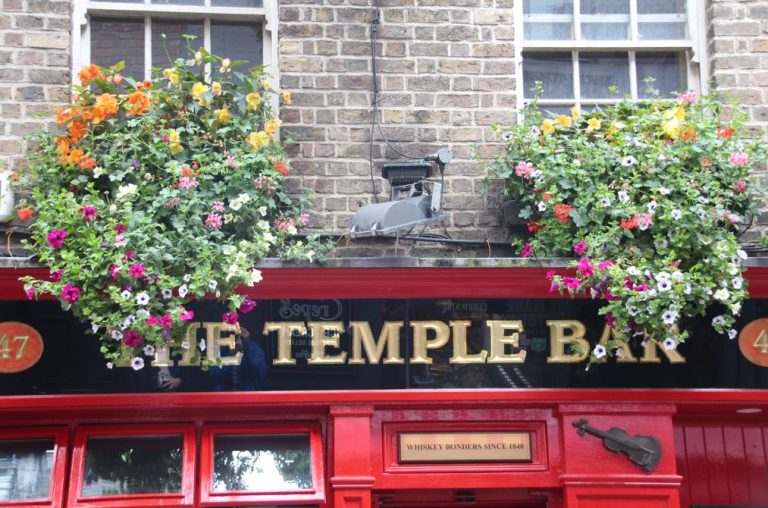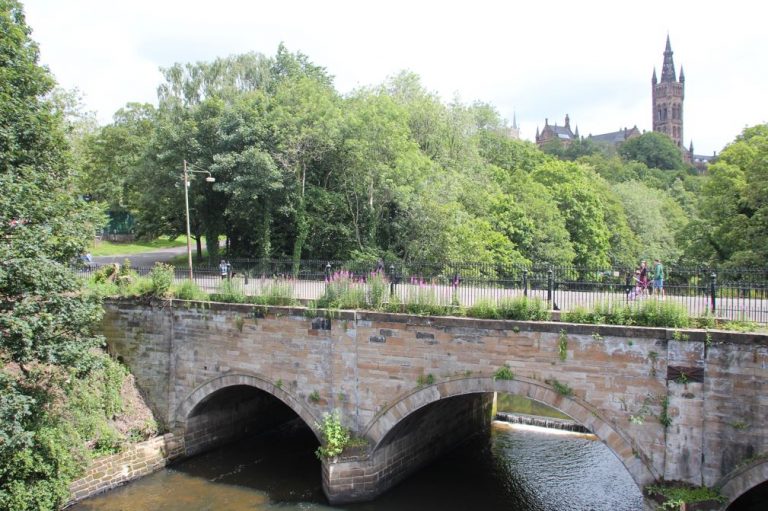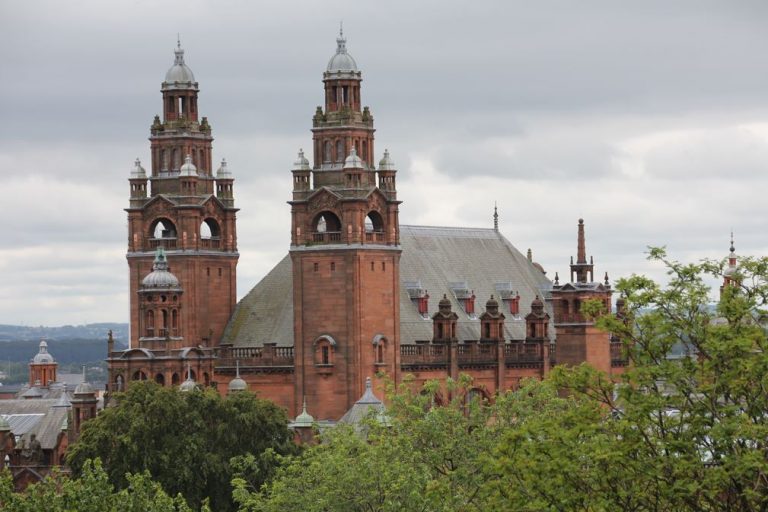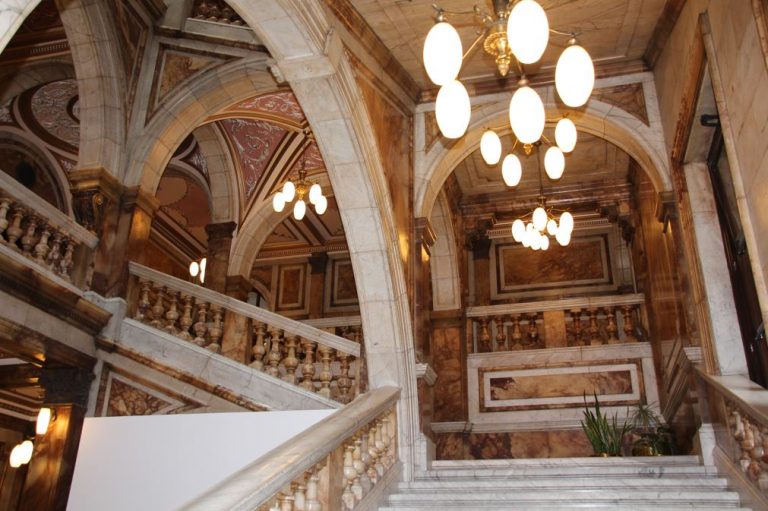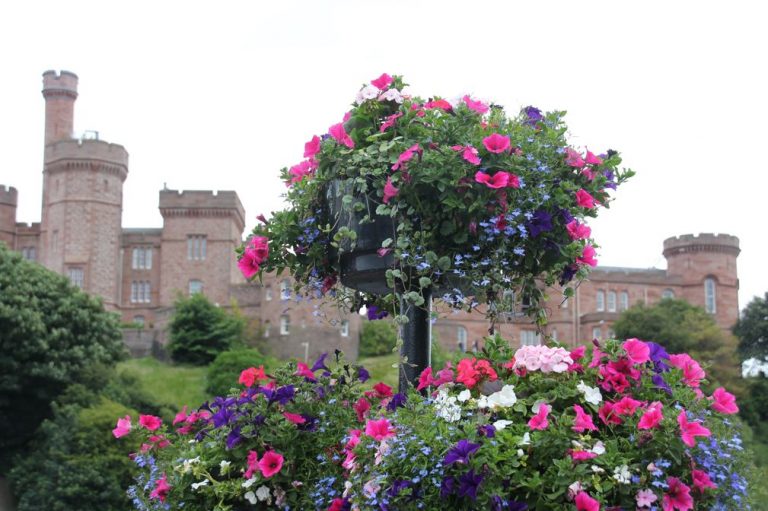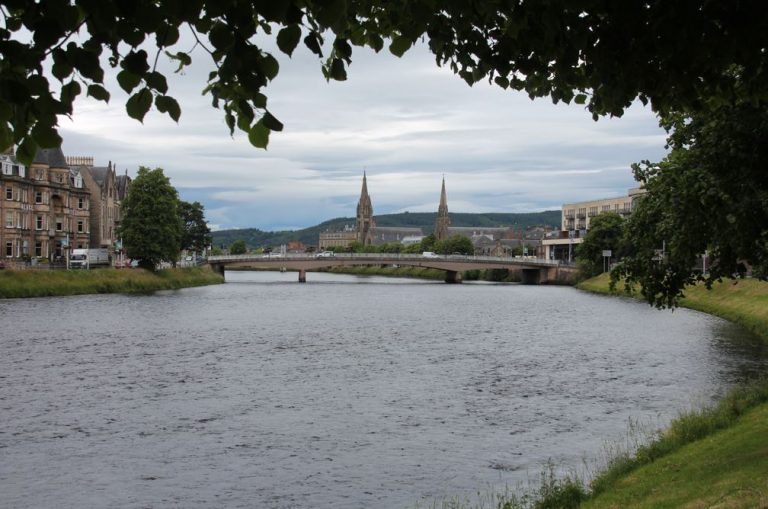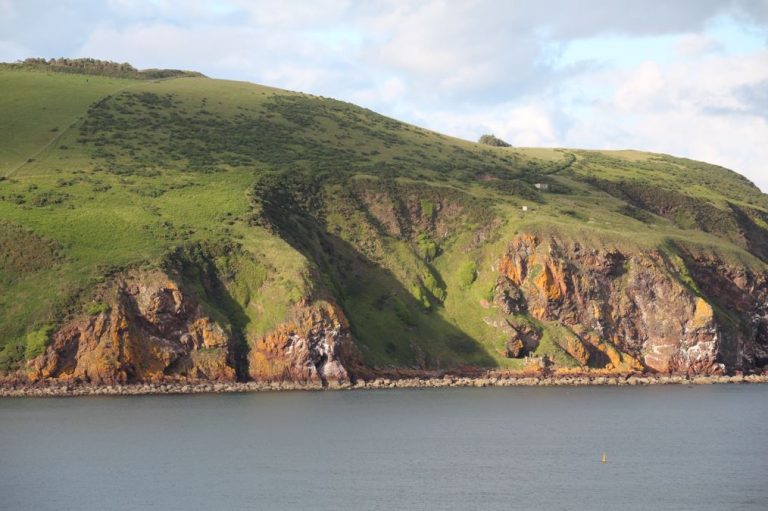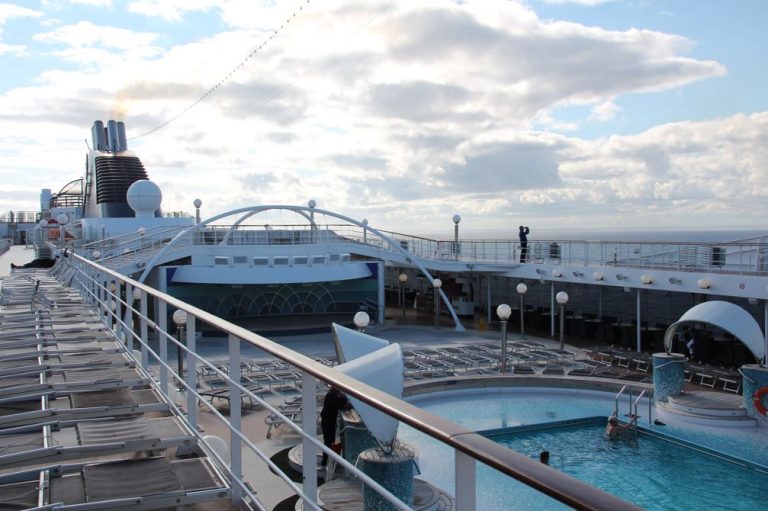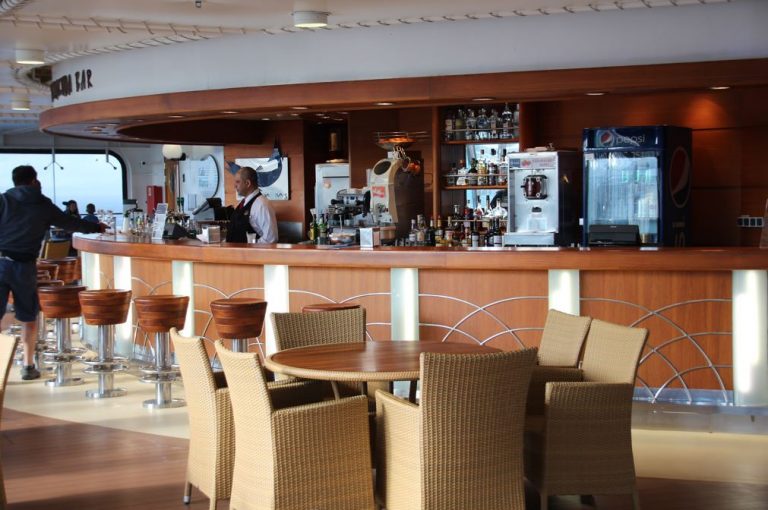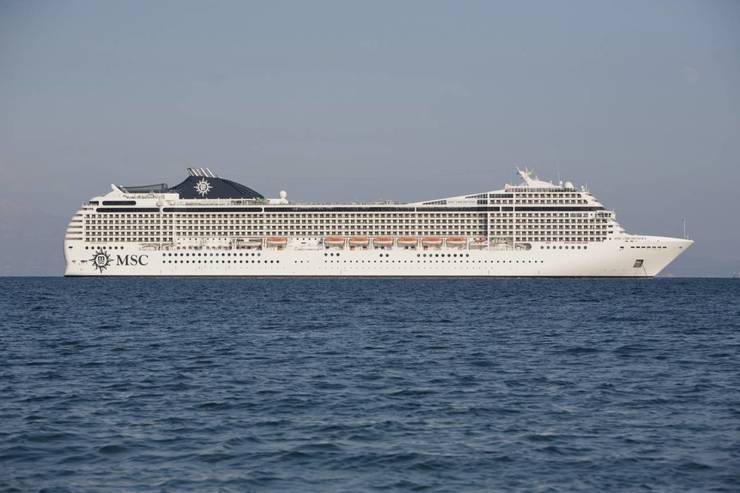Msc Orchestra: Round Britain italian style (Pt2)
We have come to the end of the story of this experience on board Msc Orchestra, if you missed the first part of the story you can read it here (Part 1).
Dublin
The picture that presents itself the next morning is not unlike that in Belfast. The sky is overcast, green hills mark the Irish coast to portside and starboard, and Ireland’s capital Dublin comes into view by means of cranes, factory towers and the silhouettes of various ferries first. During our approach to the city, the Baily Lighthouse can be spotted on starboard while the pilot boat circles around the Msc Orchestra to bring her safely into port.
Like Cork, the Irish capital is still hiding its charm in the morning hours. The north bank of the Liffey where the cruise and ferry port are situated, is the less attractive part of Dublin anyway. According to an old joke, Dublin women from the Southside only married a man from the Northside if they wanted their stolen purse back. Those days are gone, of course, but O’Connell Street remains a hive of activity. The “Spire”, a 123-metre steel sculpture, has been erected here in 2003, but Dubliners appear to be indifferent to it. The locals have come to name it “Stiletto in the Ghetto” or “Stiffey by the Liffey”, nicknames that better remain untranslated here. Moreover, O’Connell Street is lined with statues of the heroes of the Easter Rising, Ireland’s Republican insurrection of 1916, and in a side street, a statue of James Joyce has been given a prominent place as well. His mammoth novel “Ulysses” is set in Dublin, but the legacy of other famous Irish poets is kept alive in many ways in the capital as well. The same goes for the famous Guinness dry stout beer (Ireland’s national drink) which is served in almost every pub in Dublin and which after more than 250 years is still being brewed in the St. James Gate district on Dublin’s Southside. The brewery now also has a museum attached to it. The “Guinness Storehouse” in Portland Street is considered Ireland’s biggest tourist attraction, attracting more than 1.7 million visitors each year.
Dublin Msc Orchestra
St. Patrick’s Cathedral can’t keep up with that, even though it is much more beautiful to look at and quite a bit older than the brewery. It dates back to the 12th century when the Normans had just conquered Ireland. The writer Jonathan Swift was dean of the cathedral for 32 years in the 18th century and is buried there. And the large park around the church building is lined with benches and lawns – perfect for a little rest before walking the next part of Dublin in the afternoon.
Our walk almost inevitably leads to the shopping mile of Grafton Street and ends in the trendy district of Temple Bar. The name goes back to Sir William Temple, an Irish statesman who bought the quarter on the banks (“Bar”) of the Liffey in the 16th century to develop it into a trading centre. However, this only worked until the ships got bigger and the river was no longer deep enough to accommodate them. Dublin’s port subsequently moved further and further eastwards – with the result that the Temple Bar district became increasingly dilapidated. It was not until Dublin was named European Capital of Culture in 1991 that this changed again. The streets around Essex Street, Anglesey Street and Fleet Street were redeveloped, renovated and gentrified, with the consequence that the district has now become so hip that hardly any Dubliner can afford to live here anymore.
Dublin
Glasgow
The Clyde. The river that flows through Glasgow and becomes wider and wider as the Firth of Clyde before it amalgamates with the Irish Sea is as mush connected to maritime history as Belfast and the river Lagan or Newcastle and the river Tyne. The Clyde has seen the LUSITANIA set off on her maiden voyage, the AQUITANIA being built and launched and of course the three famous Cunard “Queens” of the 20th century. Nowhere has shipbuilding been more productive in the 20th century than on the banks of the river Clyde – be it at John Brown’s in Clydebank, at Stephen & Sons in Linthouse or at Fairfields in Govan. Shipyards large and small, supply factories and wharves were lined up all along the railway line that still leads from Glasgow’s city centre as far downriver as Greenock. This town also is where the Msc Orchestra docks on the seventh day of her Round Britain cruise. A suburban railway nowadays takes 40 minutes to get to the city centre of Glasgow – once you have found the somewhat hidden station, that is.
Glasgow
At Glasgow‘s central station, we meet a friend of mine who has agreed to show us his hometown “in a nutshell”. Everything that is of interest to us, everything he wants to show us himself, and everything else we get to see along the way. We have five hours to spare, so off we go.
From the 1901-built central station, we take a walk along the vibrant shopping mile of Buchanan Street first, before Glasgow’s underground railway swallows us up at St. Enoch station. It takes us to Glasgow’s West End with its Hillhead district and Botanic Gardens. Nearby, we wander through a small artists’ and students’ quarter around Ashton Lane, before one of Glasgow‘s most striking buildings comes into view: the Gilbert Scott Building, the main building of the mighty neo-Gothic University of Glasgow. Founded in 1451, it moved to its present prominent location in 1870 at the height of the city’s mercantile glory. We get to peek into the nave-like great lecture hall, stroll reverently through the cloisters and, at the end, also briefly wander through the corridors of the adjoining Hunterian Museum – the first of three museums we will visit today. James Watt and Lord Kelvin took studies at Glasgow University. Some of the instruments they used back then are now part of the museum’s exhibition.
Glasgow
We then continue on foot through Glasgow, an amazingly green city with a lot of parks. We pass the magnificent sandstone-red Kelvingrove Art Gallery (the most visited museum in Britain outside London) on our way down to the banks of the Clyde. There, museum no. 2 awaits us – Glasgow’s Riverside Museum. This is a technology museum that has it all –from Clydeside’s historic trams and buses to shipyard and river panoramas and ship models of all kinds. Outside the museum, the GLENLEE is docked, a tall ship built in Glasgow in 1896. It circumnavigated Cape Horn 15 times before almost falling into oblivion in the 1960s. In 1990, the city of Glasgow bought the vessel which since 1999 serves as a floating museum in its old home port.
A little later, a small river ferry shortens our way to Govan, a district on the south bank of the Clyde. You won’t find magnificent neoclassical house facades or world-famous museums here; for 200 years instead, Govan was Glasgow‘s most important shipyard and workers’ district. Nowadays however, there are no shipyards and workers left. Where once stood one of the largest shipyards in the world, there is now only the “Fairfield Heritage Centre”. This small but fine museum (no. 3) gives you an impression of Glasgow in days gone by. What is left of Fairfield after various insolvencies and restarts as BAE Systems is hidden a few streets away in unadorned white construction halls. The world’s third-largest defence company is producing individual parts for a new aircraft carrier here. The latter itself, however will not be assembled in Glasgow, but in what has been Glasgow’s long-time main rival port further south – Liverpool.
Glasgow
Our tour de force of Glasgow not over yet, the best is yet to come: the wonderful mundane area around George Square back in the city centre which is dominated by the imposing City Hall. Inside, you feel as if you’ve been transported to an Italian Renaissance palace, so much marble, granite and mosaics have been used here. Outside, two stone white lions are enthroned in front of the portal, the only blemish being the James Watt monument which the Glasgow seagulls have long covered with a thick white coat of droppings.
The surrounding streets of Glasgow boast an architecture that is unparalleled. Not only did the Art Nouveau icon Rennie Macintosh immortalise himself in them, but also other great architects such as Alexander Thomson and William Young. Nevertheless, Glasgow has also been a playground for modern architecture during the past two decades. The city was named British Capital of Architecture and Design in 1999, European Capital of Culture (1990), UNESCO City of Music (2008) and hosted the Commonwealth Games (2014). You can’t have more culture than that, and Glasgow no longer needs to fear its eternal rival Edinburgh in terms of visitor and tourist numbers either.
Invergordon and Inverness
After a well-deserved sea day, during which the Msc Orchestra circumnavigated the northern tip of Scotland, the ship heads for the small town of Invergordon two days later. Two plush Highland cattle sit in front of the souvenir shop on the quay, and next to them a sign reads “100 % Nessie guarantee – tomorrow!” It advertises bus tours to Loch Ness since that is Invergordon’s main function: the harbour and town serve as the entrance to the Scottish Highlands. From here passengers can go to Loch Ness, but also to Macbeth’s Cawdor Castle and to Inverness, the so-called capital of the Highlands.
Inverness
Inverness welcomes us with drizzle rain, but honestly, we didn’t expect anything else. The city is situated at the mouth of the river Ness, the river that flows into the world-famous Loch Ness further south. Therefore, the lake monster “Nessie” is omnipresent in Inverness – be it on T-shirts, mugs, postcards or in the form of soft toys of all sizes, colours and shapes. But the city has more to offer than only the world’s most famous non-existent reptile. Inverness Castle sits enthroned on a hill by the river. A castle already stood on the same spot in the 11th century, but like its successors it was exposed to various fires, sieges and destruction over the centuries. In contrast to this are the green banks of the river Ness where you can take a wonderful walk. The striking St. Andrew’s Cathedral is located here, but it is also not far to the Caledonian Canal. Similar to the Swedish Göta Canal, the waterway connects Scotland’s east and west coasts via 29 locks. The city centre of Inverness is also worth an extensive stroll. The old Victorian Markets are particularly beautiful, as is the Old High Church, the only building in the city that still dates from the Middle Ages. What you won’t find in any travel guide however is Leakey’s Book Shop – a real treasure trove and a paradise for book lovers which has more the feel (if not the order) of an old library than that of a bookshop. If you stop in here, you won’t want to leave in a hurry!
Inverness
Invergordon
For fun pool parties or dreamy hours on the outside decks, the forecast for the rest of the Cruise back to Hamburg does not bode well. The weather report reads “8° C min” and “10° C max” in bold print – March temperatures at the beginning of July. So we better stay in the cosy warmth below decks as the Msc Orchestra sails across the choppy North Sea towards the German Bight. Meanwhile, the “Beer Festival” is being celebrated in the Savannah Bar. “Enjoy the Bavarian festive atmosphere,” the onboard program reads – to many of the ship’s German passenger clientele this is a piece of home at sea.
Msc Orchestra
Barracuda Bar Msc Orchestra
As the Msc Orchestra moors at Hamburg’s Altona cruise terminal the next morning, ten highly eventful cruise days lay behind us. This was not the usual seven-night cruise with flying visits here and there and a day at sea for packing or shopping, but a highly intensive travel experience, with one highlight following the next in short order. Well, the weather hasn’t been exactly a highlight, but nature, culture and architecture buffs got more than their money’s worth on this beautiful cruise to Ireland and Scotland. Seeing the time-honoured house fronts of Belfast and Glasgow as well as the green hills of Ireland and the Scottish Highlands, we may forgive the sun for hiding behind rainy clouds for most parts of the trip. And what the cruise itself lacked in terms of sunshine, the beautiful Msc Orchestra more than compensated by means of great Mediterranean cuisine, wonderful onboard music and a shipboard life in true Italian style.
Here is completed our Msc Orchestra story, and you want to tell us about your experience? You can do so by leaving a review on Cruising Journal.
Also don’t miss updates, news and reviews of Msc Cruises on Cruising Journal with photos, videos and cruise deals!

